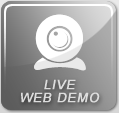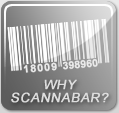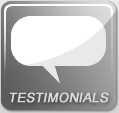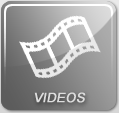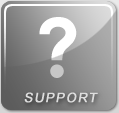Outfitting Your Bar to Achieve Maximum Profitability
Bar Design
 The way your bar operates depends on many factors, one of the most important being the "machinery" of the bar. Sometimes, no matter how efficient your staff, the bar just isn't set up to allow maximum productivity. Avoid that happening to your bar.
The way your bar operates depends on many factors, one of the most important being the "machinery" of the bar. Sometimes, no matter how efficient your staff, the bar just isn't set up to allow maximum productivity. Avoid that happening to your bar.
- Form over function? Think hard about potential consequences before spending too much money on interior design. Of course, how a bar is perceived aesthetically is very important. But, don't put aesthetics above function. It could radically hurt your business. Before starting on the renovations, stop and think about how they will affect your staff and the duties they have to fulfill.
- Cramped working areas reduce productivity. Make sure the new bar has enough room for bartenders and glass collectors to move about freely.
- Storage space. Is there enough storage space behind your bar to ensure your stock doesn't run dry three times a night? Consider extra fridge space or even bins full of ice for fast- selling bottled beer products.
- Is the bar decor comfortable, attractive and easy to clean? Not only does clutter look bad; it can reduce productivity.
- Comfort. Are your seats and tables the sort of quality furnishing that will keep a customer happily seated throughout the evening? A little more money spent on customer comfort will translate into dollars over the bar.
The Front Bar
Your front bar is your first line of attack in the fight to keep a customer coming back for more. When looking for ways to impress your clientele, remember that the impression this bar leaves on your patrons is of paramount importance. Consider these issues and make sure the design of your front bar works as well as it can:
- Customer interaction is vital. Is your bar top too wide? Is the music too loud for a customer's order to be heard over a crowd? Does it inhibit your staff from being able to engage in friendly chat with your clientele? Interaction with your customers is crucial if you're going to turn one- off customers into regulars.
- Be wary of mirrors. Mirrors may give a momentary illusion of more space, but they also fog up and smear an hour after they're cleaned. Mirrors might look good initially, but their maintenance does cost you money. Consider replacing them with artwork, memorabilia, menu boards, or something else that will draw people in. Don't just fill a space.
- Appearances count. Do you have bits of paper stuck to the walls which might contain important information for your staff but look terrible to the customers? Make sure that any staff notices are out of your customers' eye line.
- Design a bottle display with enough space to add to your inventory easily. A good selection of wines, beers, spirits and liqueurs is an essential part of a popular bar operation. You should always be looking to introduce your customers to something new.
- Stock requisitions. Is there enough room on your bottle display to accommodate two bottles of each brand? When one bottle runs out, you don't want your staff to have to dig around a stock room for a replacement. Talk to a bar fitter about improving your bottle display. Add capacity. A small expense now can bring you future benefits.
- Make it easy for your customers to see what you have on tap. Can your customers see what draft beers you have without craning their necks? Do patrons have to ask the bartender what's on offer every few minutes? If you watch the bar staff closely, you'll see that they spend a lot of time telling customers what beers you stock. Solve the problem by adding a small draft beer menu to each table and another on the wall behind the bar. Have the menus professionally prepared so that they add to, rather than detract from, your bar's appearance.
- Is your entire inventory on display? Are your fridges in plain view? Floor fridges make access difficult for your staff. They also hide your product lines from your customers. Consider changing the setup behind your bar so that most of your fridge space is in clear view.
Design Your Bar With the Customer in Mind
 Have you ever sat under a blue neon light for an hour? While neon decor might look great when a bar is packed to capacity and the music is pumping, when business is slow it's like a power drill closing in on the center of your forehead. Certainly your customers should be impressed by your decor, but will the very look that draws them in end up driving them away early? Consider the following:
Have you ever sat under a blue neon light for an hour? While neon decor might look great when a bar is packed to capacity and the music is pumping, when business is slow it's like a power drill closing in on the center of your forehead. Certainly your customers should be impressed by your decor, but will the very look that draws them in end up driving them away early? Consider the following:
- Invest in comfortable seating. Wooden barstools may look fine, and are usually very cheap to purchase and maintain, but are they likely to give your patrons buttock cramps after an hour? Try padded seating. Make sure the customers can move their seats to suit with a minimum of fuss - never have barstools and tables bolted to the floor.
- Consider installing booths. Replace those cheap tables. If you want your customers to stay all night, give them the kind of seats that will make them too comfortable to leave. Customers tend to settle into booths, especially if a venue is crowded. If your drink servers are attentive and food is available, a group in a booth is all the more likely to settle in until closing. Remember, a shaky table is very easy to walk away from.
- A comfortable bar surface keeps your clientele happy. Make sure your customers can lean on the bar and get comfy without getting cold elbows. This is much more likely if your bar surface is wood than if it's stainless steel or marble.
- Lighting. Your lighting does more than just keep people from bumping into one another - it sets a mood. If you've inherited a system of overhead fluorescent lights or neon, consider getting a lighting specialist to give you suggestions on potential improvements. It won't cost as much as you think. Generally a quote is free.
Color Schemes Influence Buyer Behavior
Have you ever wondered why fast-food outlets almost always follow the same color scheme? The McDonald's decor and logo are yellow and red, as are those of Taco Bell and Burger King; KFC's are red and white, just like Pizza Hut, Wendy's and Jack in the Box. Coincidence? Not quite. Research has shown that certain colors promote cravings in consumers. When an establishment is decked out in reds and yellows, customers tend to experience feelings of hunger, not to mention an inability to settle down and relax. It's believed that those colors will cause a moderately hungry person to order a little more than he or she needs. They also will prompt customers to move on quickly once their money is spent. Blues and greens, on the other hand, promote relaxation, serenity and even lethargy amongst customers, which might be the better option for an establishment like a bar, where you're looking to keep your clientele seated for the long haul. How can you utilize these colors to quietly "persuade" your customers to buy, buy and buy?
- Menus and food areas. A red and yellow color scheme on your tabletop menus or food area signage may cause your patrons to develop a stronger urge to order food, yet not be so over whelming as to chase them out the door.
- Bar decor. Some hardy potted plants, maybe a few palms and a little pastel color on your walls may help your bar promote a feeling of island- like serenity in your customers, compelling them to relax a little - and stay.
- External decor. Your signage and building front are supposed to draw people in. But does your frontage inspire the desire to party? Or does it drive people to the KFC down the street?
- Staff uniforms. Do the colors of your employees' uniforms say to your customers, "Welcome, stay a while," or "I'm busy, what do you want?" Your staff uniforms are an important part of your overall decor. Your decisions about their design can radically change the atmosphere of your establishment.
Streamlining Service Areas
 When you design your service area, it's important to realize that every step a bartender takes in the serving of a drink is costing you money and making your customers impatient. Where does your staff need to walk to get a clean glass? How far from there to the ice bins and then to the spirit dispenser? And where are your soda guns in relation to the bottles? Is the cash register yet another trip away from the customer? Even if your bartender has to take only four or five steps between each of these posts, consider how far that means your bartender has to walk in the course of serving 500 drinks a night! This is bad enough for a solo bartender, but when two or three people are working behind the same bar and sharing facilities, it can be an unproductive nightmare.
When you design your service area, it's important to realize that every step a bartender takes in the serving of a drink is costing you money and making your customers impatient. Where does your staff need to walk to get a clean glass? How far from there to the ice bins and then to the spirit dispenser? And where are your soda guns in relation to the bottles? Is the cash register yet another trip away from the customer? Even if your bartender has to take only four or five steps between each of these posts, consider how far that means your bartender has to walk in the course of serving 500 drinks a night! This is bad enough for a solo bartender, but when two or three people are working behind the same bar and sharing facilities, it can be an unproductive nightmare.
- Most bartenders are right-handed. With this in mind, your bar setup should allow your staff to pick up glasses with their left hands and bottles with their right, so that the drink creation process is at its most productive. If your bottles are on the left and glasses on the right, your people will do a lot of crisscrossing back and forth, resulting in more time taken to prepare a drink - and a lot more breakage and spillage.
- Consider your customers. If they're lined up three deep to get a drink, and the bar staff need to take extra steps for every drink, each of those customers doesn't just wait longer for his or her own order, but for every order ahead as well. These people are lining up to give your business money - the last thing you should do is make it difficult for them to do so.
- Low-cost equipment. If you can't afford to equip your bar with brand-new reach-in refrigerators, there is another low-cost alternative. Consider keeping a sink full of ice directly beneath the bar top. Have three or four dozen high-turnover bottled beers in the sink at all times. Your staff can refill the "Bud bins" from refrigerated stock whenever there's a slowdown in customer traffic, thereby saving dozens of unnecessary trips to the fridge every hour, not to mention giving your customers faster service.
- Pre-made mixes. To save time during their busiest periods, many bars pre-make cocktail mixes. While this is a good plan, be sure not to have these pre-made mixes sitting out in plain view. Ensure your staff don't refill them in the public eye. If your bottom line dictates that you have to use tequila from Peoria, it's best not to advertise the fact when you're charging eight bucks a drink.
The Under-Bar
Your under-bar is the engine of your bar area. If it's designed well, your staff can get from order to delivery in seconds. If it's poorly designed and dysfunctional, your customers and staff could spend a good portion of the night stuck in bar traffic.
- Focus on the customer. Employee interaction is the key. The under-bar area should contain everything your staff needs to fill 80 percent of their drink orders without moving a step away from the customer. If your staff aren't able to engage your customers in steady conversation as they're filling their orders, you're not only putting your staff through more work than they need, but you're also making your customers wait too long.
- Bar layout. If your staff can work more effectively within a smaller area of the bar, you will be able to fit more staff behind that bar during peak periods, ensuring faster service and higher productivity. Take a fresh look at the bar area and consider what changes you can make to improve productivity.
- Streamline your workstation. Many bar-fitting companies sell sink units that include speed racks, jockey boxes, ice sinks and more. They can also replace aged fittings with a minimum of fuss and expense. This will give your staff a compact, efficient workstation from which to maximize their time and effort. Prices vary, but when you consider the time, labor and customer tolerance savings, it's a purchase that will pay for itself many times over. BigTray (www.bigtray.com) can sell you this kind of equipment online or over the phone at 1-800-BIG-TRAY
This article is an excerpt from the Food Service Professional Guide to Bar & Beverage Operation, authored by Chris Parry, published by Atlantic Publishing Company. This excerpt has been reprinted with permission of the publisher. To purchase this book go to:



